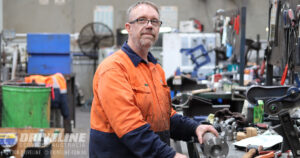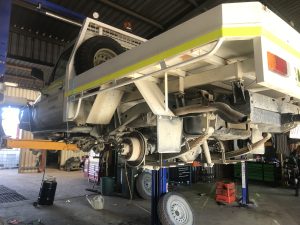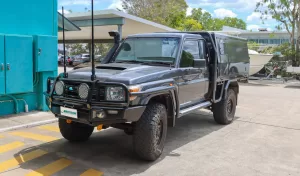Thousands of precision components go into the motors that power our cars, trucks, trains and industrial machinery. But that only tells half the story. Getting the power from the motor to the wheels is the next big piece of the puzzle, and that’s where driveshafts come in. Humans have been using wind, water, horses and other means of producing power for millennia. By generating power and using it to do work for us, humans have been able to do incredible things, and driveshafts have made it all possible. In this blog, we are going to look into the history of driveshafts and see how they make our machinery and our world go round.
What is a Driveshaft?
In modern cars and trucks, the driveshafts are the part of the drivetrain that transfers the power from the engine to the wheels, usually through a gearbox and differential. Driveshafts are found in everything from ordinary passenger cars to serious off-road vehicles because they offer good balance between cost and performance while also improving on-road handling. The main benefit of driveshafts is that they are fitted with various forms of constant velocity (CV) joint at either end of the shaft which enables them to transmit power through variable angles whilst maintaining a constant rotational (or drive) speed.
When Were Driveshafts Invented?
The earliest mention of the term ‘driveshaft’ dates back to the mid 19th century where it was used in a patent for a planing and woodworking machine. But, even before that patent was lodged, driveshafts were being used to transfer rotation from a power source to a place where it was needed to do work. That means some of the earliest driveshafts were used with inventions like water wheels to move the power that was being made and use it for things like pumping.
By the late 19th century, the term driveshaft had entered more common usage, and it appeared in several machinery patents. A designer by the name of Rush Battles referenced the driveshaft in his 1891 patent for a steam-powered locomotive. Shortly after, it also appeared in designs for a horse-engine and velocipede. By 1903, the term driveshaft had been applied to automobiles when Autocar, a company that helped pioneer the car industry, began to use the term to describe the driveshafts in their cars.
Modern Driveshaft Technology
Driveshafts have come a long way since that 19th century patent, and the term is now almost exclusively used to refer to car, truck and other vehicle components. Modern vehicles also tend to distinguish between driveshafts, axles and propshafts:
- Driveshafts are fitted to the vehicle transversely, supplying power from the differential to the wheels. This is most commonly found in front wheel drive and all wheel drive cars.
- Propshafts are fitted longitudinally, transferring power from one end of the car or truck to the other. This is most common in rear wheel drive and four wheel drive vehicles where the engine is far away from the driven wheels. The term ‘propshaft’ is simply a shortening of ‘propeller shaft’.
- Axles come in dozens of different varieties, depending on the vehicle and how it’s used, but they are distinct from driveshafts. Where a driveshaft features Constant Velocity (CV) joints at either end, an axle is simply the shaft that connects the two joints. In some cars – such as 4X4s with rigid axle setups – the axle also delivers power directly to the wheels.
Looking for Underbody and Power Transmission Experts? Get in touch with Driveline!
It’s not an exaggeration to say that driveshafts power our world. They keep our equipment moving, trucks driving and cars running the way they should be. The Driveline team has been servicing customer and commercial vehicles for decades, providing specialist driveshaft repairs and maintenance work to keep your equipment working for longer. We manufacture, export and import components for a wide range of cars, trucks, trains, mining, and other machinery, or we can custom make driveshafts that are perfect for your application. Speak to our team today for more information on our driveshaft repair and maintenance services.



